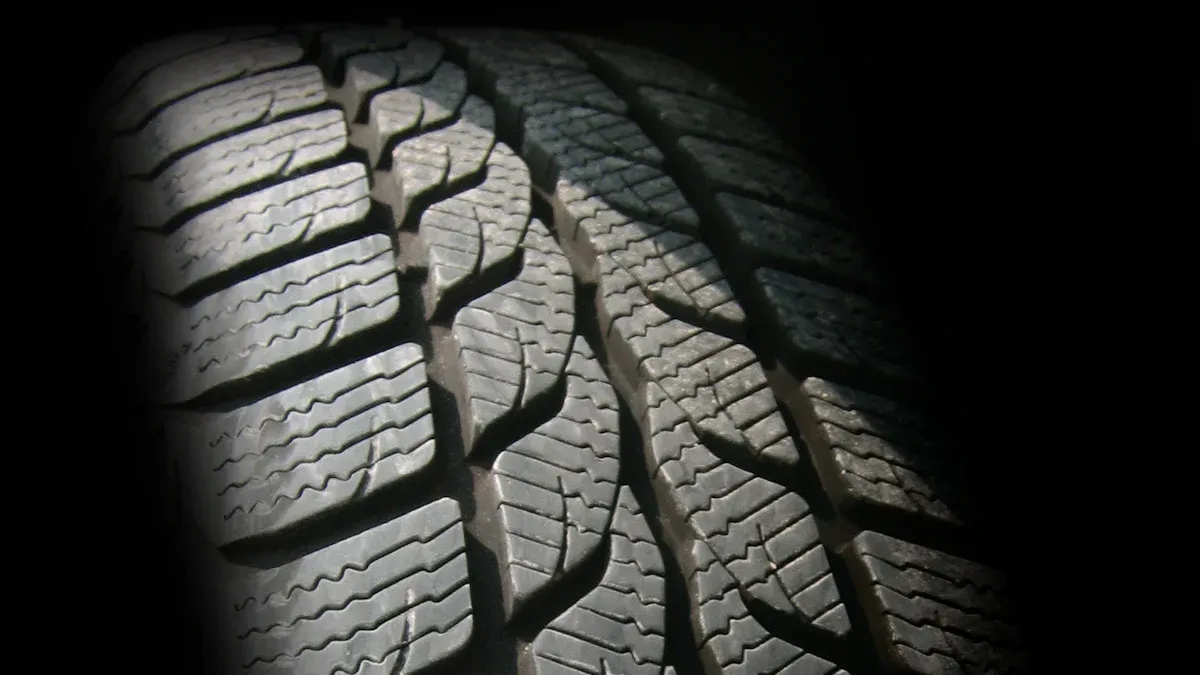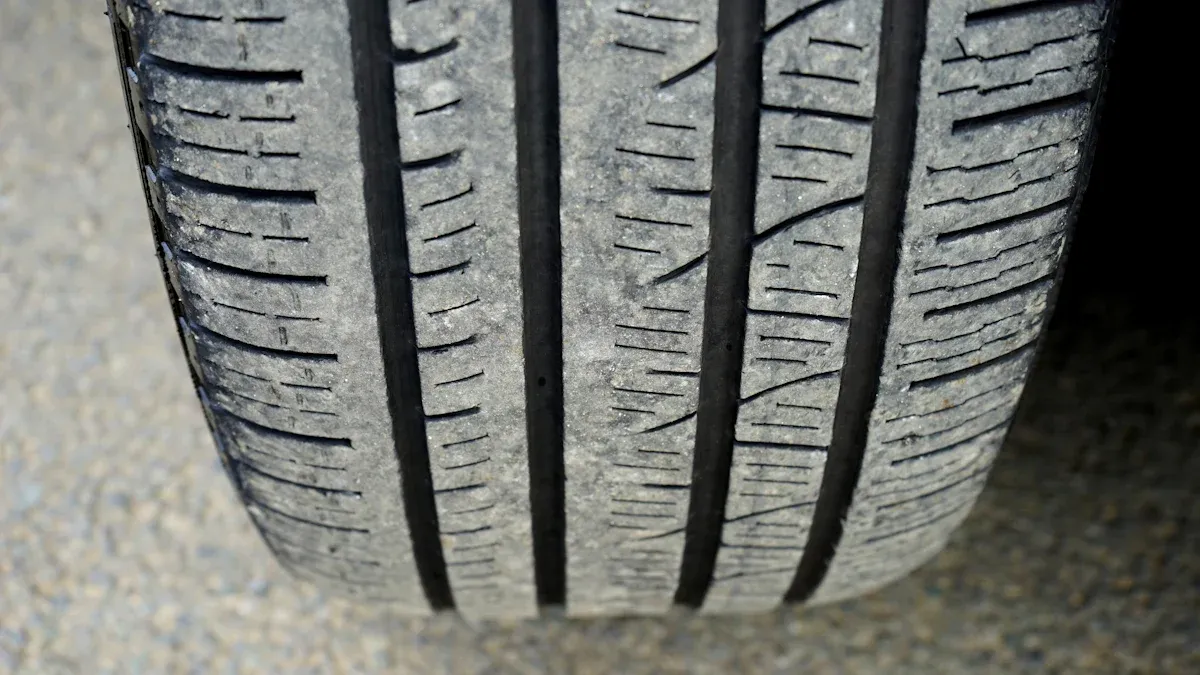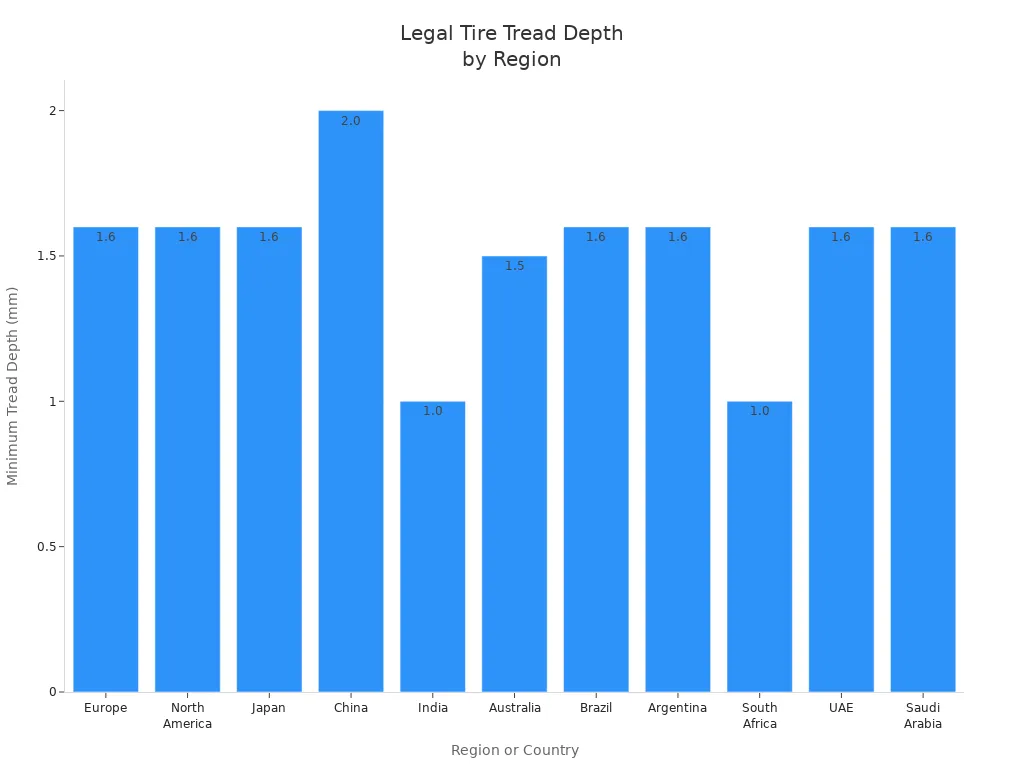
Tire tread depth plays a crucial role in your safety and vehicle performance. Did you know that around 10% of vehicles have at least one bald tire? This can lead to serious accidents. Join our quick-check challenge to see how your tires measure up and ensure you’re driving safely!
Önemli Çıkarımlar
Check your tire tread depth regularly. Aim for at least once a month to ensure safety and performance.
Use the penny test or a diş derinliği ölçer for accurate measurements. Replace tires when tread depth is 2/32 inches or less.
Watch for signs of tire wear, such as uneven tread or visible damage. Addressing these issues early can prevent accidents and save money.
Lastik Diş Derinin Önemi

Tire tread depth is very important for safe driving. Your tires are the only part of your car that touches the road. So, having enough tread is key for grip and control. Here’s why you need to check your tire tread depth.
Güvenlik İpuçları
Low tire tread depth can cause big safety problems. Here are some important facts:
Tires with a tread depth of 2/32” or less are unsafe, especially when it’s wet.
AAA found that tires with a tread depth of 4/32” can make stopping take 43% longer. That’s an extra 87 feet compared to new tires!
The National Highway Traffic Safety Administration (NHTSA) says one in every 11 crashes has a tire problem before the crash.
When your tires are worn out, they can’t grip the road well. This can cause hydroplaning, which is when your car loses contact with the road. Here’s how it happens:
When tread depth is too low, tires can’t push water away.
Water builds up under the tire, causing hydroplaning.
This leads to losing grip and possibly losing control of the car.
Performance and Fuel Efficiency
Tire tread depth also affects how your car performs and how much gas it uses. Worn tires can make it harder for your engine to work. This can lead to using more fuel.
Checking your tire tread depth often can help keep your fuel efficiency high.
Interestingly, deeper tread grooves can manage water better. This reduces hydroplaning and helps with handling.
Here’s a quick look at how tread depth affects stopping distances:
Tread Depth (inches) | Stopping Distance (feet) |
|---|---|
10/32 | 234 |
6/32 | 253 |
4/32 | 282 |
2/32 | 356 |
As you can see, when the tread depth gets lower, the stopping distance gets longer. This shows that keeping enough tire tread depth is very important for safety and performance.
Methods to Check Tire Tread Depth

Checking your tire tread depth doesn’t have to be complicated. You can use several methods to ensure your tires are safe and performing well. Here are three popular techniques you can try:
Bir Kuruş Testi
En kuruş testi is a quick and easy way to check your tire tread depth. Here’s how it works:
Grab a penny and hold it with Lincoln’s head facing down.
Insert the penny into the tread grooves of your tire.
If you can see all of Lincoln’s head, your tread is too shallow, and it’s time to replace your tires.
While this method is simple, it’s not the most precise. It gives you a rough estimate but may lead to unreliable assessments. For a more accurate check, consider using a quarter instead. The quarter test measures greater depths, providing a better indication of tire safety.
Diş Derinliği Ölçer Kullanma
For a more accurate measurement, you can use a diş derinliği ölçer. This handy tool is designed specifically for measuring tire tread depth. Here’s how to use it:
Take your diş derinliği ölçer and go to the deepest part of the groove in the tire.
Ignore any raised areas that may be present.
Read the measurement on the gauge.
Using a tread depth gauge gives you a precise reading, helping you determine if your tires are safe for the road. Many automotive safety organizations recommend checking your tire tread depth regularly, ideally once a month.
Measuring Across the Tire
To ensure even wear, you should measure the tread depth across different areas of the tire. Here’s how to do it:
Use the penny test or a tread depth gauge at multiple points on the tire.
Look for built-in tread wear indicators, which are visual marks that indicate when to replace the tire.
For the most accurate measurement, check the shallowest groove and record the results.
By measuring across the tire, you can catch any uneven wear early and address potential issues before they become serious.
Yöntem | Açıklama |
|---|---|
: En doğru ölçüm için bir diş derinliği ölçer kullanın. Probunu uzatın, oluk içine yerleştirin ve ölçümün 1.6mm’nin üzerinde olduğundan emin olun. Bunu lastiğin çevresi boyunca ve genişliği boyunca tekrarlayın. | A tool specifically designed to measure the depth of tire tread accurately. |
Tire Tread Depth Chart | A reference chart that helps drivers determine tread depth visually and understand when to replace tires. |
Penny Testi | A simple test using a penny to check if the tread depth is sufficient; if Lincoln’s head is visible, the tread is too shallow. |
Regularly checking your tire tread depth is essential for your safety and vehicle performance. By using these methods, you can stay proactive about your tire maintenance and ensure a safer driving experience.
Tread Depth Measurements Explained
Knowing how to lastik diş derinliğini is very important for your safety. Different depths show how well your tires can work. Here’s what the different tread depths mean:
What Different Depths Mean
Condition | Safety Implication | |
|---|---|---|
1/16 or less | Worn | Unsafe, think about replacing |
2/32 or less | Critical | Replace right away |
Above 2/32 | Monitor | Check for uneven wear |
When your tread depth goes below 2/32 inches, you need to act fast. Tires like this can cause dangerous problems, like losing grip or hydroplaning. Watching your tread depth helps you stay in control and safe.
Yasal Gereksinimler
In the U.S., the lowest legal tire tread depth is 2/32 inches (about 1.6 mm). Here are some important things to remember:
Most places say tires are worn out at 2/32″.
Some states have different rules, but 2/32″ is the main one.
U.S. law needs visible Tread Wear Indicator bars to show when tread is worn down to this level.
Driving with tires below the legal limit can cause serious issues. You could get fines or be held responsible in accidents if your tires are unsafe. Always check your tread depth to stay safe and follow the law!

When to Replace Tires
Knowing when to get new tires is very important for your safety. Tires wear down over time. Spotting the signs can help you avoid dangerous problems. Here are some key signs that it’s time to think about new tires.
Signs of Worn Tires
Watch for these signs that your tires might be worn:
Low Tread Depth: If the tread wear indicator bars are even with the tread, you have 2/32 inç veya daha azsa left. This means you need new tires.
Uneven Tread Wear: Look for uneven wear patterns. If one side wears out faster, it could mean alignment problems.
Tire Damage: Check for cuts, punctures, bulges, or blisters. These can make the tire unsafe.
Cracks or Age: Look at the rubber for cracks, especially on the sides. If your tires are over 6-10 years old, think about replacing them.
Vibration While Driving: If you feel strange vibrations, it could mean serious wear or damage inside.
İpucu: Regularly check your tires for these signs. Finding problems early can save you money and keep you safe on the road.
Recommended Replacement Guidelines
So, when should you really replace your tires? Here are some tips to help you decide:
2/32 Inches or Less: Tires are legally worn out at this depth. If you reach this point, get new tires right away.
4/32 Inches: Many experts say to replace tires at this depth. This helps keep your car safe, especially in wet weather.
Visible Damage: If you see any damage like cracks or bulges, don’t wait. Replace your tires immediately to avoid blowouts.
Frequent Air Pressure Issues: If you often need to inflate your tires, it might mean a slow leak or damage. Fix this problem quickly.
By watching your tire tread depth and looking for these signs, you can drive more safely. Remember, waiting too long to replace your tires can lead to unsafe driving and higher costs from accidents.
Checking your tire tread depth often is very important for your safety and how well your car works. Try to lastiklerinizi kontrol edin at least once a month or before long trips. This easy step helps your tires grip the road, stops hydroplaning, and improves how your car handles. Take part in the quick-check challenge today and keep your tires in great condition!
Remember, taking care of your tires keeps you safe and can save you money later on!
lastik güvenliğini daha da artıracak.
Güvenli sürüş için minimum diş derinliği nedir?
You should replace your tires when tread depth reaches 2/32 inches or less for safety.
Lastik diş derinliğimi ne sıklıkla kontrol etmeliyim?
Check your tire tread depth at least once a month or before long trips to ensure safety.
Can I drive with worn tires?
Driving on worn tires is risky. They can lead to accidents due to poor grip and longer stopping distances.
Ayrıca Bakınız
Güvenlik için Lastik Diş Derinliği İzleme Önemi
Kesin Ölçümler İçin Lastik Diş Derinliği Ölçer Kullanımı
Akıllı Lastik Diş Derinliği Dedektörlerini ve İşlevlerini Anlama






